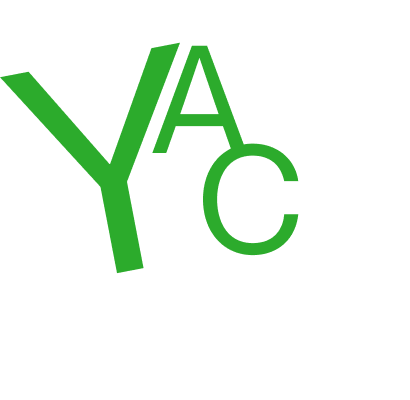Roo Dhissou
-
Interview by Deep K Kailey
-
Published in October 2025
-
Roo, I often think about art as a way of opening conversations that are already alive in people. How did your journey as an artist begin and what first pulled you toward socially engaged, research-led work?
I grew up in Punjab and came to the UK for primary school. My earliest memories are creative ones: running through the village, playing with animals, making things out of whatever I could find. When we moved, I was the youngest in my family and struggled to fit in. I became quite reclusive. My mum tells me I would take myself off to play alone, making toys from scraps of fabric in her sewing kit or from leftover boxes in my dad’s shop. Looking back, that was my first studio — making worlds out of what was at hand.
Making has been a mode of survival for as long as I can remember. It gave me a way to process change, to cope with displacement, and to stay connected to myself. That sense of inventing with what you have has never left me. It’s why my practice now is grounded in weaving, clay, cooking, writing — gestures and materials that carry care, memory, and belonging.
Socially engaged practice gave me the language to see those gestures as art, and research gave me the tools to think critically about them. Writing sharpens ideas about cultural dysphoria and belonging; making lets me test those ideas with others, in real time. For me, art is not about producing objects with answers. It’s about creating infrastructures of slowness, care and repair — spaces where people can survive, rest, and imagine new ways of being together.
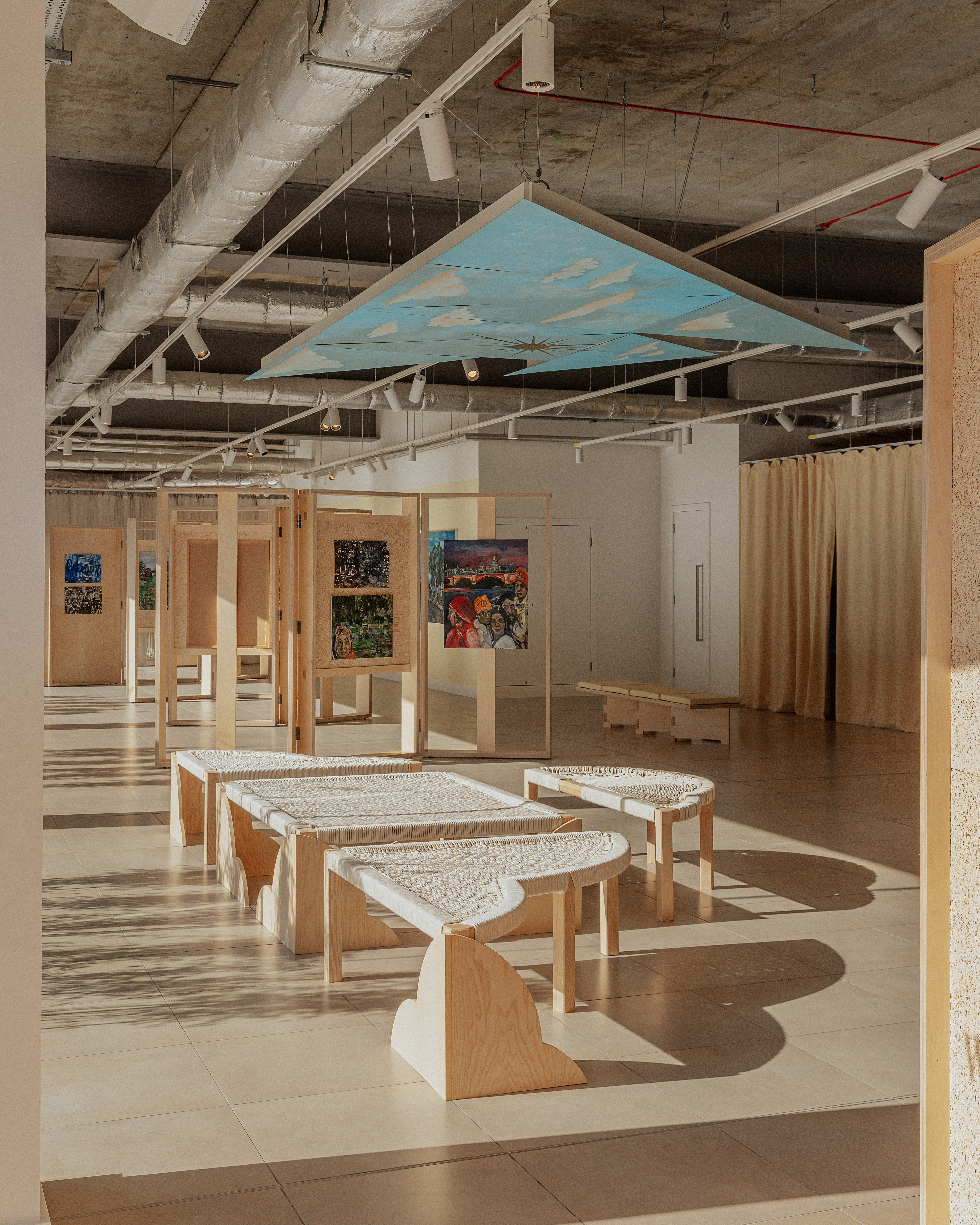
Roo Dhissou, A String of Love, 2025, at without SHAPE without FORM
We’ve collaborated on the exhibition Reflections – Sangat and the Self at without SHAPE without FORM. In your work A String of Love you bring a manji (a traditional South Asian bed) into the gallery. For me, it immediately speaks to ideas of taking time to look inwards through 'rest' and belonging. What does this object mean to you, and why was it important to reimagine it here?
When you asked me to be part of this exhibition, my first thought was, I have to make another manji. You're spot on when you say, rest and belonging are central to the work, but for me the manji also carries complexity. Growing up, wherever there was a manji, people would gather — aunties, uncles, kids — sharing tea, biscuits and conversations from morning to night.
I also have a vivid memory of lying on a manji on our rooftop in Punjab as a kid, covering my head with my auntie’s scarf and watching the clouds shift into shapes. Even though I was alone, I felt surrounded by so much love, community and happiness. That sense of comfort and connection is what I wanted to bring into the gallery space. But, I never want the manji to be read only as nostalgia. It’s also a structure of survival and gathering, where comfort and difficulty, memory and migration, all sit together. Bringing it into the gallery was about holding that complexity, whilst also celebrating a simple memory.
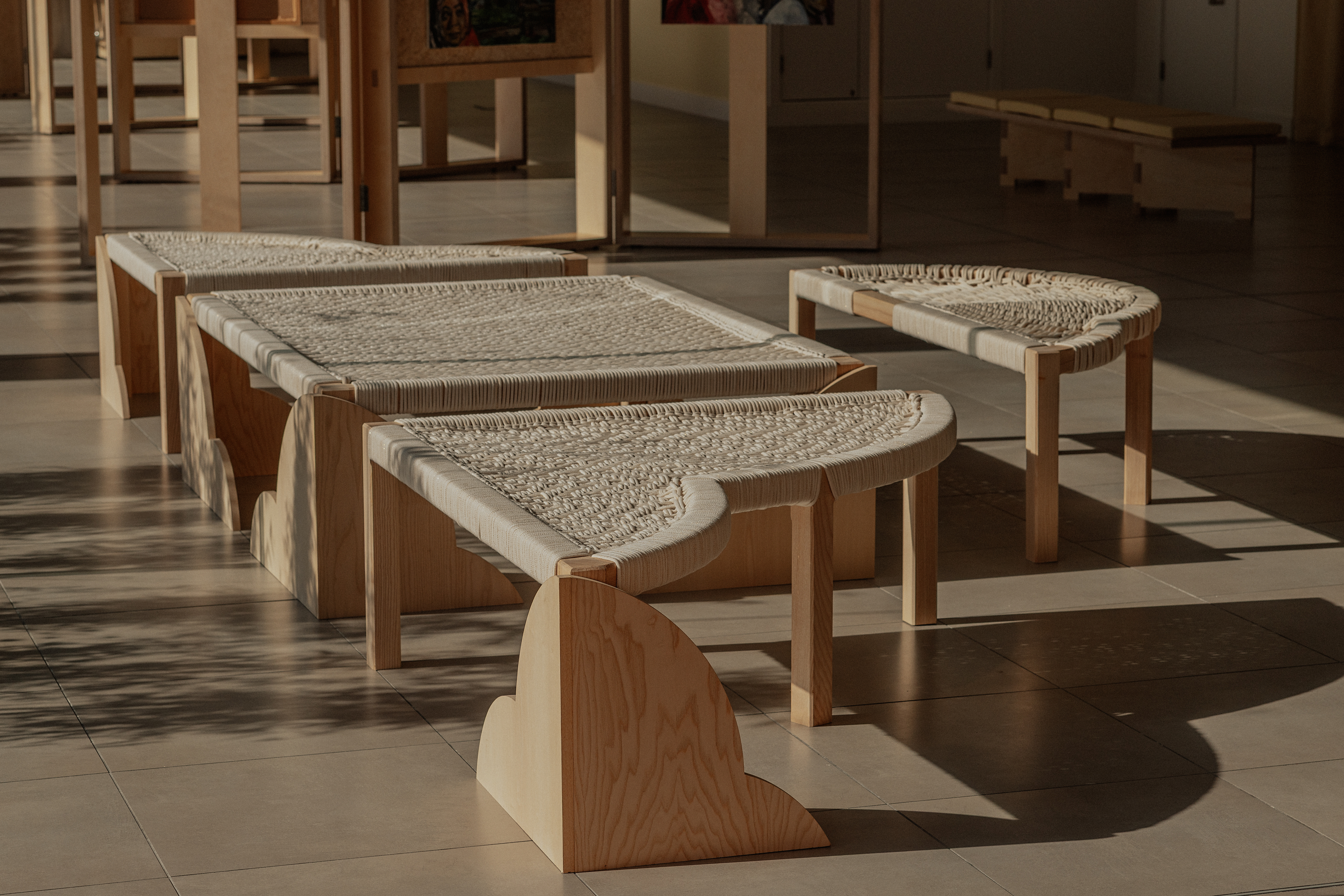
Roo Dhissou, A String of Love, 2025, at without SHAPE without FORM
I’ll share a quick story - when you mentioned your aunties, I was immediately transported to my mum’s ancestral village. I can picture myself sitting in the courtyard on a manji, clinging to her hip. We only ever went to India in the summers when it was unbearably hot. I’d pull her chunni over my face, desperate to keep the flies away, thinking, we’ve only just arrived and I’m going to hate this place for the next six weeks. But within days, I was completely won over. You couldn’t pry me away and when it was time to leave, I cried so much. Like you, I can still picture the manji, the sky and those nights sleeping outside in the courtyard. It was gorgeous. Ok moving on... Sangat - gathering and kinship is at the core of this exhibition and is something I return to again and again in my own practice. How has it shaped the way you think about collective healing and belonging?
There have been several moments in my life where I've been isolated physically or emotionally. Gathering with community and family has been a point of healing and core part of my practice. I genuinely believe people around you reflect what you see in yourself. It's really nice to be in a space where the organisation I'm working with also has similar values but equally our practices are mirroring and echoing each other and having conversations of their own. That’s something rare. I've been talking about sangat from the very first moment I went back into my art practice. I used to be a painter - I loved painting and still do. I still see sangat as some sort of painting, except I'm not one holding the brush, other people are. I'm holding the canvas.
Adding to that, both the exhibition and A String of Love have these neutral, subtle palettes. The colour is brought through when people engage with it - the manji is merely a blank canvas and we are the paint or the medium.
That’s a beautiful metaphor. All of the people that gather on it, all of the conversations, even if it's someone alone having a moment to themselves, dreaming of the clouds above or remembering something, even if that's not shared publicly, it's just for them, that too is a painting.
I’ve noticed how you shift between food, publishing, installation and dialogue in your work. At without SHAPE without FORM, we’ve learned that sometimes the method is the message. How do you decide which medium best serves the questions you’re asking?
It's always a process and choosing a method is part of that. Especially as a researcher, I prefer process over final product. Don't get me wrong, the final product is always really beautiful, in this case, the manji, but all of the work that went into conceiving it, all of the weaving, all of the ways in which that manifested is so important. In this exhibition, I wanted to be able to hold space for people without me being there physically and using sculpture and installation allowed for this. With food, it's more about activating it in person and a sense of care and ownership happening live. And publishing for me is a legacy work. All of those methods have different functionality, temporalities and time, and different levels of engagement.
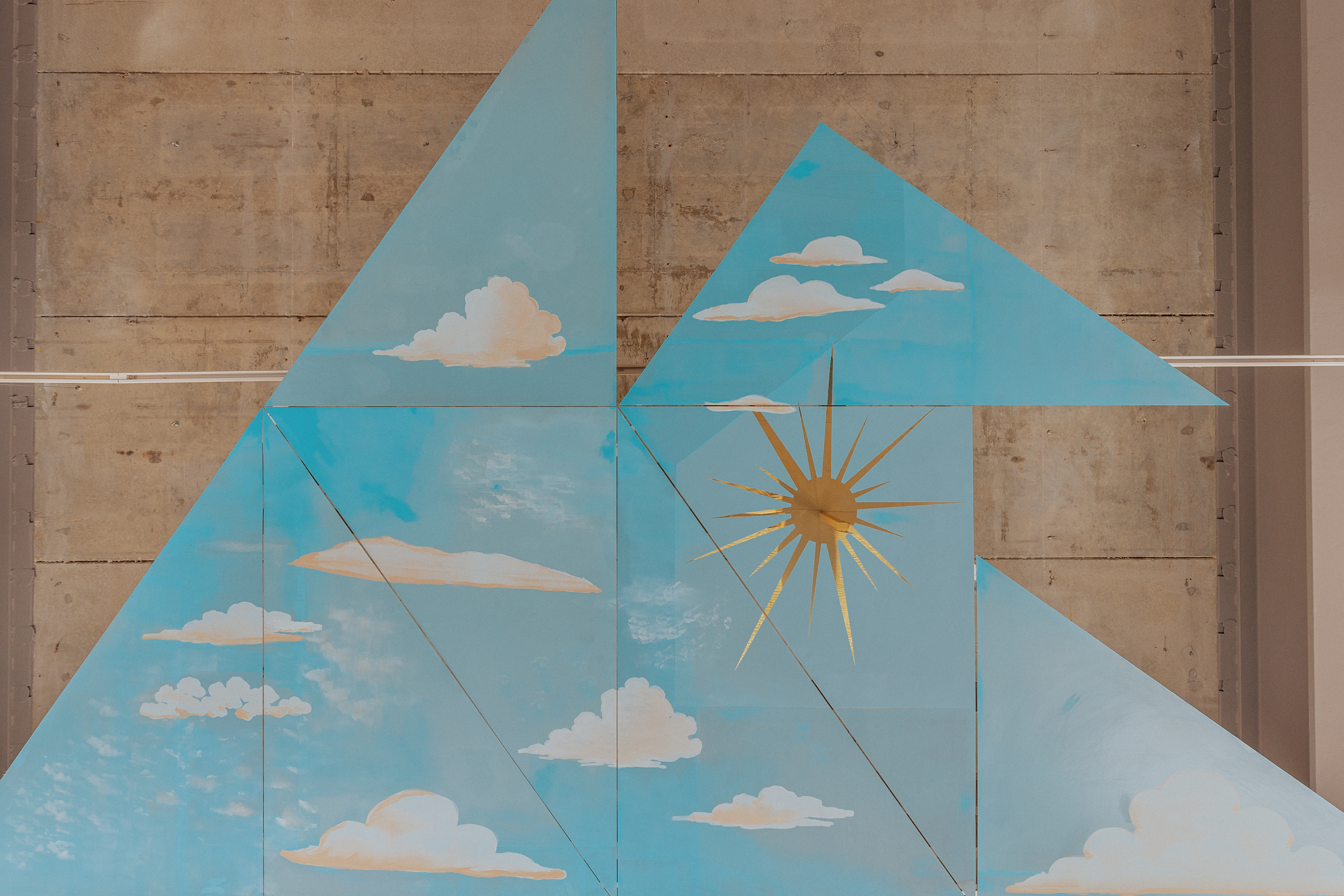
Roo Dhissou, A String of Love, 2025, at without SHAPE without FORM
So I've always felt that art can be a space for self discovery and healing, and that's something that we try to hold in any exhibitions that we do. How do you see your work contributing to wider conversations about mental wellbeing and societal fragmentation?
For me, healing is never complete, it’s an ongoing process. At times I’ve even felt like a fraud, thinking, I’m not healed yet, so how can I work around it? But that uncertainty mirrors the art-making process itself: you return to it day after day, discovering new layers, revisiting old ones, realising there are parts of yourself you didn’t know needed care until you’re in dialogue with others.
That’s how I see the link between art and mental wellbeing. Creating is a daily practice, but once a work goes into the world, it also becomes a space for others. Sometimes the work is the host; sometimes I am. Either way, it carries the traces of that ongoing healing.
I think of it like fragments on a canvas - you work on one part, then another and eventually it comes together in the gallery. Exhibiting is a moment when all those fragments cohere, but they also remain open, inviting others into the process. In that sense, art and healing go hand in hand: neither is ever truly finished, but both are about creating spaces where something whole can briefly be glimpsed.
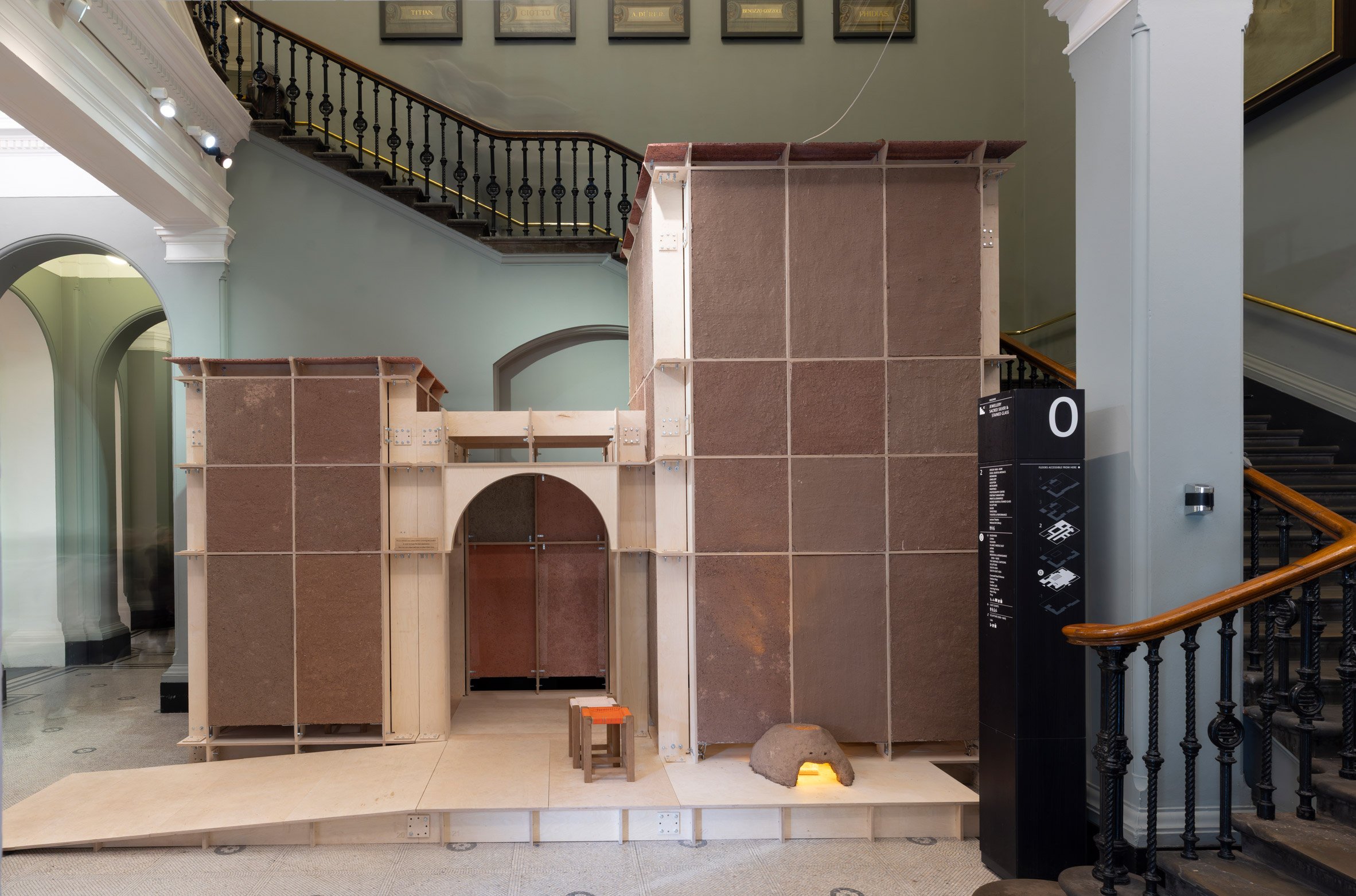
Roo Dhissou x Intervention Architecture, Heal, Home, Hmm, photo courtesy of the V&A
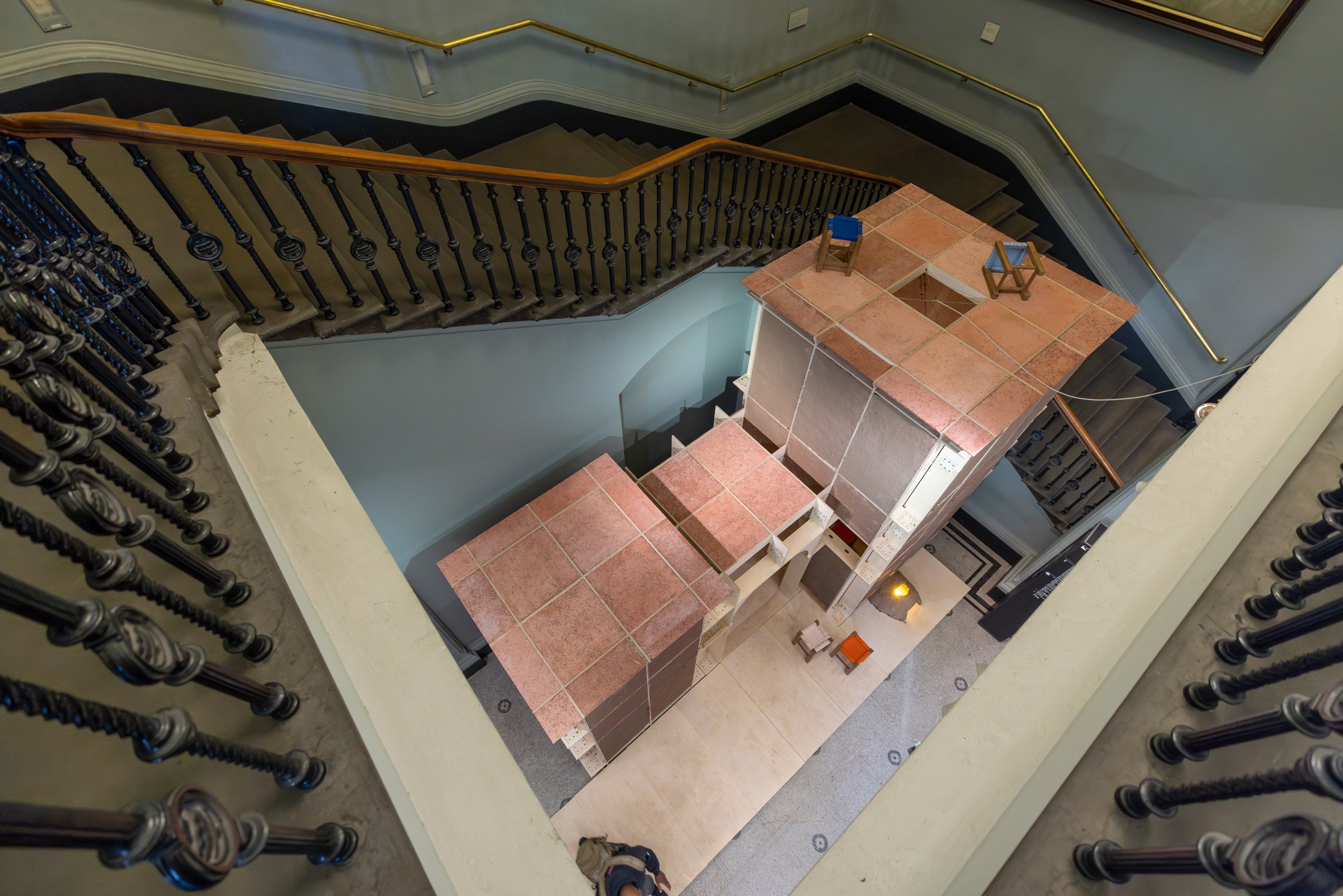
Roo Dhissou x Intervention Architecture, Heal, Home, Hmm, photo courtesy of the V&A
I love that - art and healing are a process and a journey. Your works are both materially intensive and socially engaged. How do you keep yourself nourished and creative across projects?
For me, nourishment always comes back to process. Being with others, sharing food, laughter, joy and sometimes pain and tears is deeply sustaining. Those moments of togetherness are both healing and cathartic. I also find humility in the way people interact with my work: sometimes I’m feeding them, other times they’re feeding me, literally and metaphorically.
Equally, I’m nourished by the material side of practice. I love working with my hands; keeping them busy helps focus my mind. There’s a kind of inherited wisdom in that, using our bodies, our hands as another language for expression. There's talent in our hands as artists and it’s not about ego, but about recognising the privilege of being able to communicate in this way. That combination of community and material practice is what keeps me grounded and creative across projects.
Absolutely. And that ties in nicely not only with my last question, but also that idea that if the mind can be purposeful, why not the hands? And if our hands are gifted with talent, the real question is: are we using it to help others, or just to serve ourselves? So in that, I believe that artists can shape how people see themselves and each other, opening up space for reflection and connection. What role do you think artists have in shaping conversations about identity, community and care in today’s fractured world?
That’s a really good question, because I know many of my peers might answer it differently. For me, the role of the artist is to share and to communicate what can’t always be put into words, and to bring people together. I don’t think it’s about me as an individual, but about what the practice itself can hold and offer.
Sometimes the value of art lies simply in its aesthetics or tactile qualities, giving people space to imagine or feel something new. I often return to bell hooks’ words:
“It is no accident that this homeplace, as fragile and as transitional as it may be, a makeshift shed, a small bit of earth where one rests, is always subject to violation and destruction. For when a people no longer have the space to construct homeplace, we cannot build a meaningful community of resistance.”
That resonates deeply with me. My work tries to create those fragile, transitional homeplaces, whether through a woven manji, a shared meal, or a clay pavilion. They may be temporary, but they allow for rest, care and the possibility of resistance. But the work often takes on a life far beyond what we imagine. Artists can’t always predict what their work will mean for others and we have to allow it to move and breathe in different contexts.
That’s why I believe in creating multiple entry points: I may have my own intentions, but audiences bring their own interpretations, and I learn from that too. Art can open up reflection, connection and care if it gives tools for understanding whilst remaining spacious enough for people to meet it on their own terms.
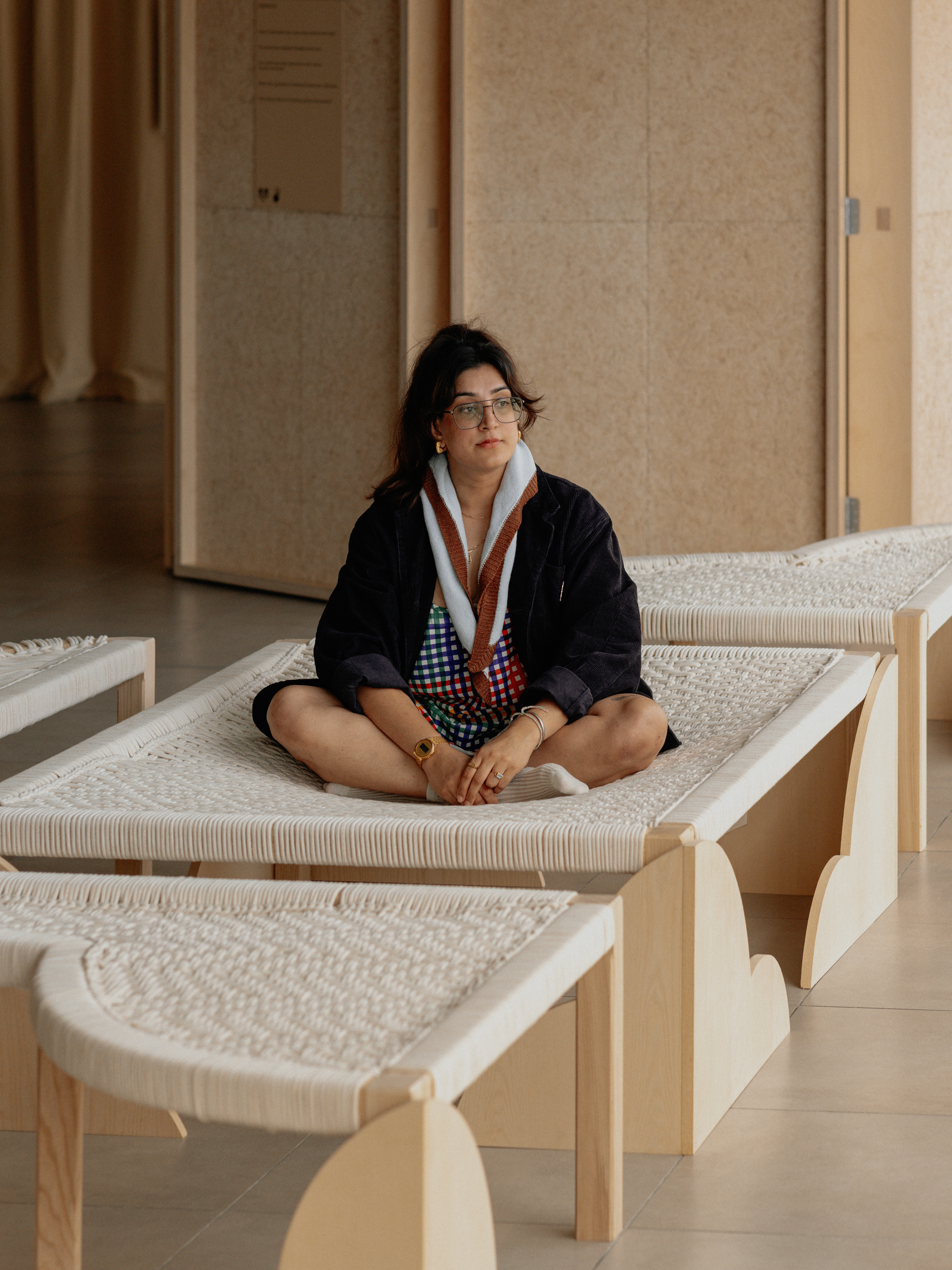
Roo Dhissou, photo by Taran Wilkhu, courtesy without SHAPE without FORM
-
Reflections – Sangat and the Self is at without SHAPE without FORM, Slough, UK, from 19 September 2025 – 2 May 2026
︎ @withoutshapewithoutform
withoutshapewithoutform.com
-
︎ @roodhissou
rookaurdhissou.com
︎ @iamdeepkailey
-
If you like this why not read our interview with Oleksandra Martson.
-
© YAC | Young Artists in Conversation ALL RIGHTS RESERVED
